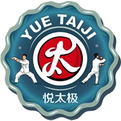
1. Do Not Use Unnecessary Force:
Generally, Tai Chi practitioners explain that unnecessary force refers to the clumsy strength that ordinary people possess, known as zhuo li (clumsy force) – this is not true strength (or nei jin – internal strength). The existence of clumsy force hinders the generation of true strength, so it is necessary to transform clumsy force into energy for true strength to emerge. However, not using force does not mean eliminating clumsy force. The distinction between clumsy force and true strength is that the former refers to the unnecessary exertion of force during movement, which leads to a scattering of physical energy, while the latter refers to the phenomenon of concentrated force during movement. Therefore, not using force means simply avoiding unnecessary exertion. What constitutes unnecessary exertion? This phenomenon leads to the dispersion of physical energy, reducing the effectiveness of movements. In martial arts, unnecessary exertion first increases physical energy consumption, making the body easily fatigued and unable to sustain prolonged movement. Secondly, due to the dispersion of physical energy, the parts that require force cannot utilize sufficient strength, resulting in an inability to fully exert skills. To eliminate unnecessary exertion, one must clearly distinguish between the parts that require force and those that do not during movement. When one perceives a sensation of strength in the parts that do not require force, one should immediately recognize that it will not have any beneficial impact on the action. For example, when walking, the arms do not need to exert force, and when writing, the legs do not need to exert force. If there is a sense of exertion, one should relax. Over time, this will eliminate unnecessary exertion. Physical energy can gradually concentrate, as most people do not pay attention to this. Clearly, when only one hand needs to exert force, they often exhibit a phenomenon of using force throughout the body. Therefore, beginners must maintain a relaxed state throughout the body before starting to practice, allowing only the strength to support the trunk, while the other limbs should not exert force. First, one must recognize the phenomenon of not using force, and then gradually experience the distinction between where to exert force and where not to during practice. The preparatory stance at the beginning of Tai Chi serves this purpose.
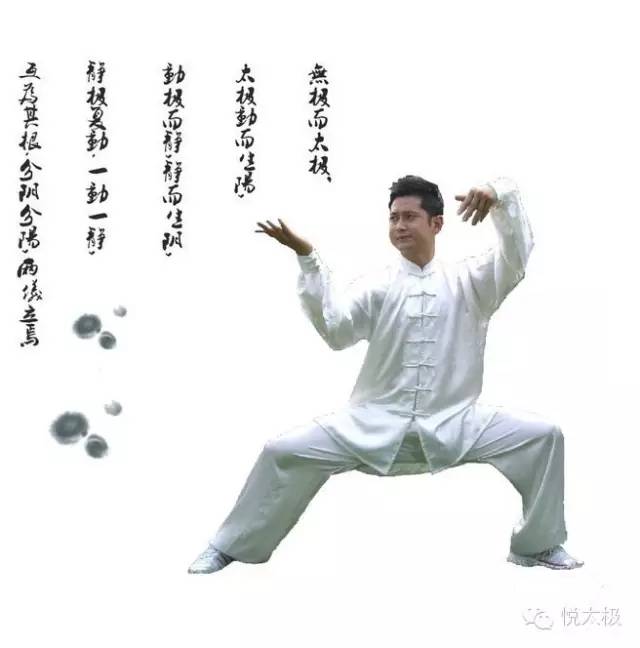 2. Avoid the Double Weighting Problem:
2. Avoid the Double Weighting Problem:
In Tai Chi, the most critical mistake is committing the double weighting error. When both feet exert force simultaneously on the ground, the body’s center of gravity is divided between the two feet, which is called double weighting. Conversely, if both feet exert force simultaneously but the body’s center of gravity is fully supported by one foot, the force of the other foot and the trunk’s force are balanced according to the principles of leverage, which is not double weighting. This is the common explanation of double weighting. However, in Tai Chi, the empty foot is not without strength; it is simply used in a void. The so-called empty foot has strength, but it is merely a matter of intention. Wang Zongyue stated that “if the left is heavy, then the left is empty,” indicating that the empty foot is not entirely without strength, and both double weighting and empty weighting are errors that must be avoided. If practitioners cannot recognize this point, they may not have the double weighting problem but may still fall into the empty weighting problem, as both are errors to be avoided. The above is a simple explanation of double weighting; in fact, double weighting is a phenomenon, not a form. It refers to any part of the body that exhibits a state of stagnation at any time, which constitutes the double weighting problem and makes one easily vulnerable to being struck. If any part of the body can rapidly and continuously alternate between empty and solid, making the solid part momentarily empty through intention, one will not be easily caught or struck by the opponent. The saying in martial arts, “if the left is heavy, then the left is empty; if the right is heavy, then the right is empty,” refers to this rapid change and the constant alternation between empty and solid. To practice eliminating the double weighting problem, one can start with larger movements and gradually refine to smaller movements, ensuring that every inch of the body does not commit the double weighting error, even to the minutest detail. Such precise practice should not be rushed by beginners. Initially, one should grasp the form from the surface, progressing from shallow to deep, gradually training and understanding until one reaches the point of not committing the double weighting error.
3. Head:
The head is extremely important in the human body, as a person is an organic whole, and the head is the center of the nervous system (the brain). All human actions are directed by the brain. The head, referred to as the dingpanxing (the fixed star), governs the entire body. Movements such as advancing, retreating, and turning are all based on it. For instance, the eyes observe in all directions, the ears listen from all sides, the nose breathes, and the mouth ingests and expels, all controlled by the brain. Therefore, when practicing Tai Chi, the head should remain naturally upright, not tilted, and should embody a sense of relaxation and agility. This will invigorate the spirit. The eyes should not be wide open in anger, the brows should not be furrowed, the mouth should be closed, and one should not clench the teeth but breathe through the nose. In summary, the primary function of the head is to uplift the spirit. The method is to always pay attention to keeping the tailbone and the tip of the nose aligned vertically. At the same time, the eyes should gaze straight ahead. This way, one achieves the requirement of having the tailbone aligned and the spirit reaching the top, resulting in a light and buoyant feeling throughout the body.
4. Shoulders:
The shoulders need to be relaxed. We often see that the strength exerted by the hands is not as great as that from the shoulders and hips. Some say this is due to the inability to concentrate physical energy, so the larger areas of the hips and shoulders exert greater force. However, some individuals who have reached a considerable level of proficiency still cannot utilize their hands, and some who have trained their body strength well find that they cannot exert any force with their hands. This situation is most felt by those practicing Tai Chi. What is the reason for this? It is entirely due to issues with the shoulders. It must be understood that the body is the mechanism for generating strength, and the hands are the tools for exerting force. Strength emanates from the body and must pass through the shoulder joints before concentrating in the hands. If the shoulder joints are blocked or congested, the strength cannot pass through. It is essential to make the shoulder joints flexible and the tendons elongated. To achieve this, one must focus on relaxing the shoulders. The method for relaxing the shoulders can be divided into two parts: the first part is simply to ensure that both shoulders are relaxed. However, this is quite difficult in practice. For example, when you raise your hand, you may feel extreme tension in the shoulders, requiring prolonged attention to correct and relax. Of course, the tension in the muscles is inevitable to support the arms, but the relaxation referred to here means reducing the degree of tension in the shoulders. The second part involves consciously lowering both shoulders while simultaneously extending the humeral heads (the tops of the shoulders) outward, creating a sense of opening the shoulders. The former makes the joint membranes flexible, while the latter can elongate the tendons. However, this requires long-term practice to achieve noticeable results.
Shoulder shrugging is a poor posture. Individuals with this poor posture often feel tightness in the chest and discomfort. The correction method is simple; if one can relax the shoulders, the shrugging posture will naturally disappear. Shrugging affects the flexibility of movements, so attention should be paid to this.
5. Elbows:
The concentrated physical energy must pass through the shoulders and then through the joints to reach the hands. If both hands encounter blockage, the situation is similar to the inability of the shoulders to function together. Generally, people’s elbows, like their shoulders, often suffer from blockage issues, so without training, they cannot achieve the goal of freely applying physical energy to the hands. The training method is to focus on sinking the elbows.
The elbow is the joint in the middle of the arm, connecting the humerus with the radius and ulna. Sinking the elbow means allowing it to hang down, feeling as if it is sinking into water, but one should avoid making the sinking motion too obvious, which is something beginners should pay attention to. Although this is a very simple principle, without it, one will feel that the exertion is not smooth.
In Tai Chi, the palm is used more often than the fist (only five types of fists are used). When extending the hand, it is essential to avoid stiffness and tension; the fingers should have a sense of extension (do not forcefully spread them, just have the intention of extending), and the palm should have a sense of protrusion (not forcing the palm to protrude, but imagining the palm pushing outward). When forming a fist, one should also avoid using force and maintain a sense of softness. One should curl the fingers from the little finger, ring finger, middle finger, to the index finger in sequence until the fingertips touch the palm, with the thumb pressing down on the middle joints of the index and middle fingers. The so-called Tai Chi fist is an empty fist, which embodies this idea.
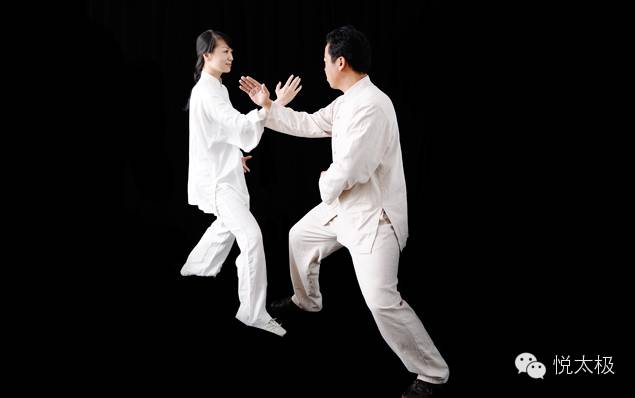 7. Chest:
7. Chest:
The chest should be slightly concave, embodying a sense of containment. The purpose is to relieve tension in the chest and enhance elasticity. Just as a cat must curl its body when catching prey, we must also bend at the hips, knees, and feet before jumping; if we do not do this, we cannot achieve the actions of pouncing and jumping. The role of a concave chest is precisely this; without a concave chest, one cannot project physical energy outward. Therefore, it is impossible for the chest to exhibit tension in forms such as protruding or sinking. Generally, beginners do not clearly understand this point. They believe that the term “concave chest” implies a sense of containment, so they strive to make the chest cavity noticeably retract, resulting in a concave state of the chest cavity. Some believe that a concave chest compresses the heart and lungs, which is a posture that contradicts physiological health, leading to doubts about the efficacy of Tai Chi. This is a misunderstanding. It should be noted that some beginners think that the role of a concave chest is to make the qi sink into the lower dantian, stabilizing the body. This statement is not incorrect, but the true role of a concave chest does not lie here. Moreover, according to physiological knowledge, the lower abdomen does not play a role in respiration, so how can qi sink into the lower dantian? This is merely a phenomenon resulting from the relaxation of the chest after achieving a concave chest. Additionally, some beginners believe that the role of a concave chest is solely to relax the chest, which is also insufficient. A concave chest allows the tension between the ribs to dissipate, enabling the lungs to develop freely and in balance. Therefore, practitioners of Tai Chi often breathe deeper and longer than ordinary people, which is a good example.
The practice of a concave chest is not a fixed posture; whenever the chest feels tense, one should visualize a warm current flowing down from the nipples to below the navel, at which point one will feel the tension in the chest naturally dissipate. At the same time, one will feel comfortable in the chest and smooth in the abdomen! This aligns with the principle of emptying the heart and solidifying the abdomen, and it is also a pathway for the Ren meridian to flow smoothly. Therefore, the rule of a concave chest is quite important in Tai Chi, and practitioners should pay attention to it.
8. Back:
The role and significance of pulling the back are not clear to all Tai Chi practitioners. Some believe that consciously pulling the shoulder blades upward is pulling the back, while others interpret pulling the back as a forward bending phenomenon, resulting in tension in the shoulder and back muscles, even leading to poor postures such as hunchback and neck shrinkage. The correct posture for pulling the back is to consciously release the tension in the shoulder and back muscles, imagining that around the top vertebra (the first vertebra of the spine), there is a palm-sized area of skin that can stick to the clothing. This is the practice of pulling the back, which should not involve bending forward or backward, nor tilting left or right, with the back appearing slightly arched. Its function is to align the spine, free it from muscle constraints and obstructions, restoring its natural state, allowing it to serve as the body’s pillar, enabling the body to move naturally and flexibly. Therefore, pulling the back is a natural posture, not a forced one; it is the body’s original state. Children naturally adopt the pulling back posture, but as adults, due to improper postures in daily activities, they lose the normal state of the spine, making it impossible to maintain their original appearance. Only through training can one restore this state (the pulling back posture). The pulling back and concave chest postures are contradictory yet unified, conforming to dialectical principles.
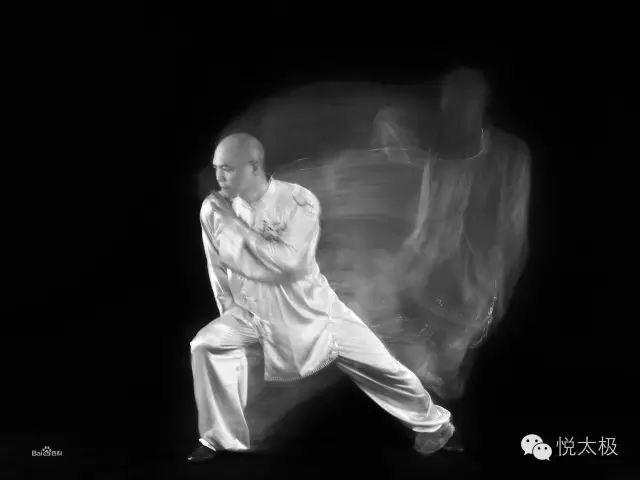 9. Waist:
9. Waist:
Tai Chi pays special attention to the waist. The first step in Tai Chi practice is to seek bodily integrity, with the body from neck to feet being a unified whole, moving in harmony, avoiding the phenomenon of two segments. The role of relaxing the waist is crucial because the waist serves as the pivot between the upper and lower limbs. The inability to achieve bodily integrity is often due to issues with relaxing the waist. When relaxing the waist, the spine should be upright and straight, not bent due to the waist hanging down. At the same time, one should only use intention to let it hang down, avoiding any exertion. Otherwise, not only will one fail to achieve the benefits of relaxing the waist, but one may also develop a habit of bending the waist or tension in the sides. Some people tend to tighten the waist, which is a very unhealthy action. If this bad habit is not corrected, one cannot achieve the goal of relaxing the waist. Relaxing the waist is like allowing an object to hang down; it must be natural. One should pay attention to the relaxation of the waist, ensuring that the entire waist area has no tension. By concentrating on drawing in the lower abdomen, the waist will naturally hang down, which is the practice of relaxing the waist. The significant effect of relaxing the waist is that it stabilizes the center in any situation. If the body is swayed by external environmental influences, simply by thinking of drawing in the lower abdomen, one can restore the body to a stable state.
10. Hips:
The outward protrusion of the hips is a natural phenomenon of the human body, but when practicing Tai Chi, one must not protrude or twist the hips. Moreover, even the slight protrusion typical of ordinary people should not be present. The protrusion of the hips affects the unity of the body during movement, separating the upper and lower parts and reducing the body’s flexibility, thus losing much of the martial arts’ effectiveness. The opposite of protruding hips is drawing in the hips. The importance of this rule is equal to that of the concave chest and pulling back. We know that some practitioners who struggle to progress do so because they do not understand the importance of drawing in the hips. Drawing in the hips means consciously contracting the hips inward, aligning them with the downward direction of the back, so that no protrusion is visible. Beginners sometimes cannot distinguish between protruding and not protruding. When they have already focused on drawing in the hips but are unsure if they have reached the correct level, they can first make the hips noticeably protrude and then draw them back to see the difference. It should also be noted that one should not tighten the lower abdomen or exert force to draw in the hips, as this not only disrupts natural breathing but also affects the stability of the lower body. The correct practice is to first relax the muscles of the hips and waist, gently allowing the hip muscles to extend outward and downward, and then lightly draw them inward. However, in terms of intention, one should imagine that the lower part of the hips is like a large bag wrapping around the lower half of the body, lifting it up. Alternatively, one can imagine being enclosed in an eggshell. This way, the entire body can remain in a natural state while maintaining balance and stability.
11. Groin:
We must first understand the location of the groin, which in physiology refers to the upper section of the femur, the area where the thigh folds down. The role of the groin is to maintain consistency in stepping forward and backward. The practice for the groin is to retract the right groin when stepping forward with the right foot and to extend the left groin forward. When stepping with the left foot, retract the left groin and extend the right groin forward. When retreating, the method is the same as when advancing, but in the opposite direction. Once this method is mastered, one can achieve a cat-like movement, clearly distinguishing between empty and solid, moving continuously and seamlessly. This seemingly simple action is crucial for maintaining body alignment. Practitioners can experiment with the above methods and will immediately understand. According to physiology, the pelvis supports the trunk like a basin, and the alignment of the pelvis naturally aligns the body. Whether the pelvis is aligned or not depends on whether the groins can balance. This means that the legs should move while the groin remains still, so attention should be paid to retracting the groin, allowing the body to align naturally. Thus, it can be seen that the pelvis plays a significant role, but it is essential to understand that the pelvis is closely related to the waist, hips, and groin (the pelvis supports the trunk, and the spine supports the pelvis, creating a layered connection), which enhances the efficiency of exercises for the waist and legs.
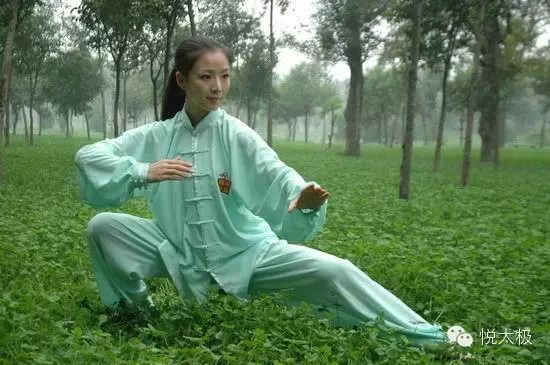 12. Crotch:
12. Crotch:
The crotch is located on either side of the kidney area. The anus and perineum in the crotch area are among the body’s weak points. Therefore, in Tai Chi practice, two methods, diangang (lifting the crotch) and guogang (wrapping the crotch), are employed to strengthen this weak area and enhance its ability to withstand strikes. The primary function of lifting the crotch is to concentrate the mind and draw the spirit inward, while the anal sphincter tightens due to lifting the crotch, aligning the tailbone and straightening the lumbar spine, aiding in the lifting action. The practice of lifting the crotch is based on a valuable training method from predecessors, which is to keep the dimeng (the gate of the earth) closed, meaning one should always pay attention to gently contracting the anal muscles. If one can practice this method and make it a habit, one will feel the perineum contracting and relaxing like a baby crying, at which point the action of lifting the crotch can be considered successful.
What is the difference between lifting the crotch and wrapping the crotch? Wrapping the crotch is not a formal action; it involves the intention of wrapping the legs toward each other, with the knees slightly inward or outward, but ultimately, the tips of the knees and toes should form a vertical line. This naturally achieves the goal of opening the crotch and rounding it, which stabilizes the body. The so-called opening the crotch refers to the thighs opening slightly, not excessively; simply having the intention to open the crotch is sufficient. After opening the crotch, the area between the legs appears round, and with a rounded crotch, the lower body stabilizes while the upper body remains agile, allowing for more flexible movements. At this time, the legs can move in an orderly manner. Wrapping the crotch is an essential exercise for the lower limbs; without it, the steps cannot move smoothly.
13. Legs:
Tai Chi has specific requirements for the legs. First, one must clearly distinguish between empty and solid; second, movements should be light and flexible; third, balance and stability must be achieved. The movements of the legs and feet depend on the bending and stretching of the fist forms, resulting in forward, backward, upward, and downward movements. Therefore, when changing positions, the legs must be flexible, and the footwork must clearly distinguish between empty and solid. The leg bearing the weight is solid, while the other leg is empty. Only by clearly distinguishing between empty and solid can movements be stable and flexible, allowing for smooth transitions. At the same time, the legs and feet must be harmonized, alternating movements and resting. The legs and feet play a significant role; every posture and movement requires support from these two areas. It can be said that the legs are the foundation of the body and the source of strength. The significant role of the legs is accomplished through the hips, knees, and feet. The saying in martial arts, “the key is in the feet, originating from the legs, opening from the hips, extending through the knees, and pushing from the feet,” indicates that in Tai Chi, the hands only account for 30% of the strength, while the legs and feet play the primary role. Thus, the importance of the legs is evident.
The practice of the legs and feet should follow the principles of relaxing the groin, lifting the knees, and keeping the soles of the feet empty. The so-called relaxing the groin is to loosen the ligaments around the joints, allowing for flexibility during kicking movements. The knees should always maintain a slight bend, enabling them to act elastically at all times. In our daily lives, we can practice relaxing the groin and lifting the knees, such as when climbing stairs or hiking; simply by thinking of relaxing the groin and lifting the knees, one will immediately feel light and agile, making the ascent quick and effortless. When descending from a height, one should not use the relaxing groin and lifting knees method; instead, one should focus on the relationship between the groin and feet. The specific method is to think of where to place the foot, and it will naturally follow. For instance, when one foot just lands, one should start thinking from the sole of that foot, moving up to the groin, and then down to the foot. This cycle of alternating thoughts allows the legs to move smoothly and naturally from top to bottom.
The above 13 rules are the essential postures of various body parts during Tai Chi practice.

